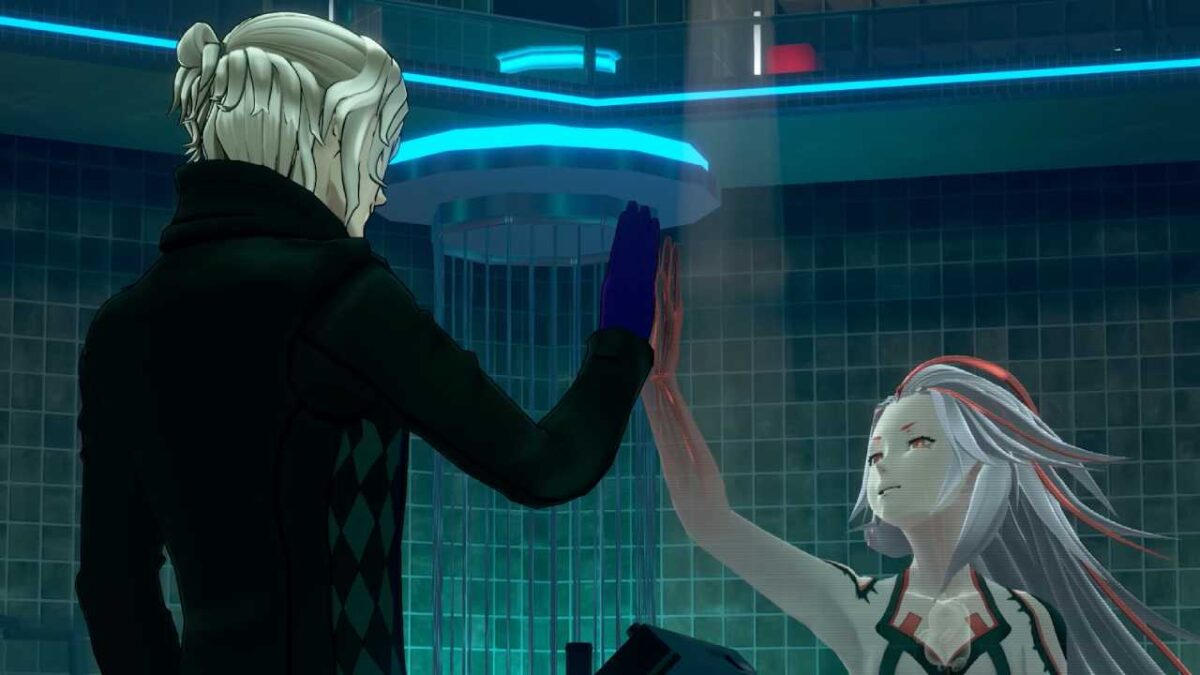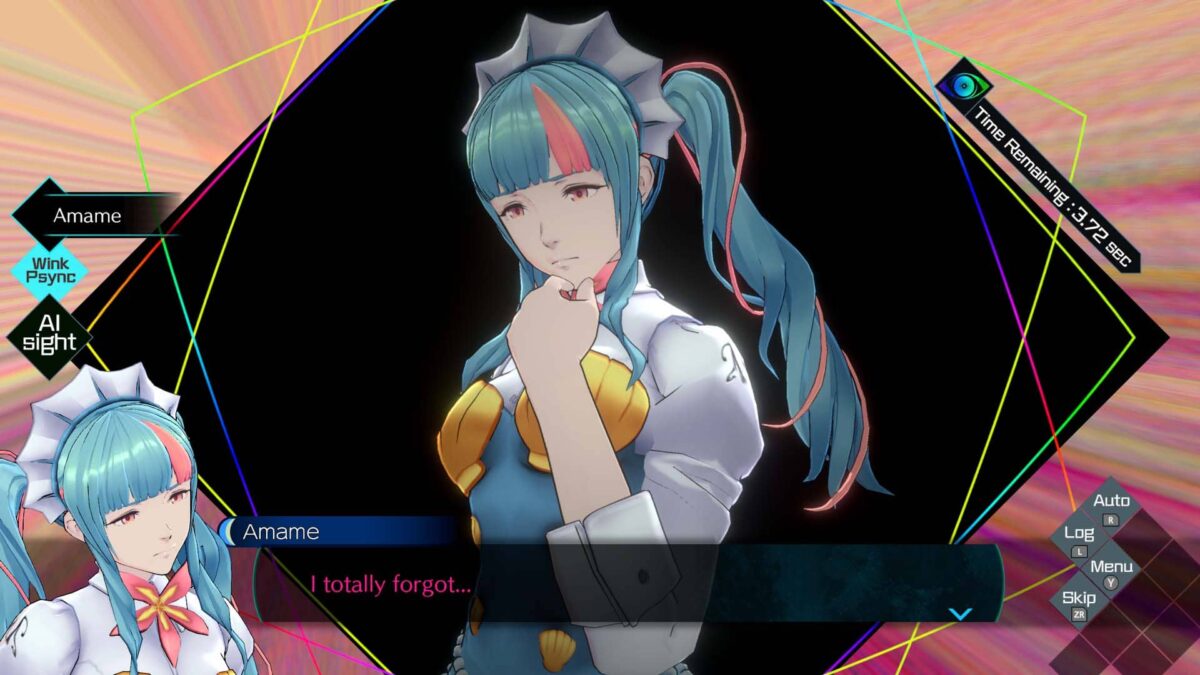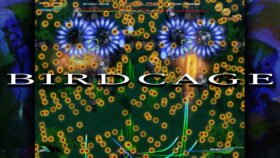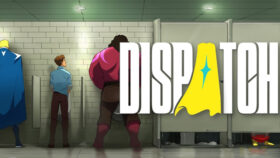As I approached this No Sleep for Kaname Date review — my first experience with the AI: The Somnium Files series — I was already mentally preparing for inevitable frustration
Let me be upfront about something — I’m genuinely terrible at puzzles. Like, embarrassingly bad. Hand me a Rubik’s Cube and I’ll return it in worse condition than when you gave it to me. Most of the time, when I see “puzzle game” in a description, I immediately scroll past. My brain simply doesn’t process spatial relationships and logical sequences the way these games expect, and frankly, most puzzle games leave me feeling intellectually outmatched.
What I discovered instead was something considerably more nuanced than I anticipated. It is clear to see why this title was one of the most anticipated reveals in March’s Nintendo Direct — it is a game that somehow manages to be simultaneously demanding and surprisingly accommodating.
Entering Mid-Narrative (and the Inevitable Confusion)

I need to address this immediately – this game is categorically not designed for series newcomers. Everyone mentions the “spoiler toggle” feature that supposedly assists new players, but that only shields you from major plot revelations. The emotional resonance? The intricate character dynamics? You’re missing approximately 90% of what makes the fanbase emotionally invested in these characters.
It’s analogous to walking into a television series during its third season. Sure, you can follow the surface-level developments, but you lack context for why that character’s breakdown should devastate you, or why everyone finds Date’s inappropriate humor endearing rather than off-putting. The game attempts exposition through dialogue, but it’s transparently crafted for established fans who already have deep affection for this cast.
That said, if you’re genuinely curious about this universe and don’t mind navigating some narrative confusion, it’s not the worst entry point. The central mystery is relatively straightforward – investigating a bizarre alien abduction case that’s almost certainly not extraterrestrial – and the character personalities are distinctive enough that you’ll quickly grasp their essential dynamics.
The Puzzles That Genuinely Tested My Limits

This is where things become fascinating for someone like me who typically flees from brain teasers. This game features some of the most sophisticated escape room puzzles I’ve encountered in any video game.
We’re discussing challenges that had me retrieving actual pen and paper to track codes and pattern sequences.
The Ancient Civilization chamber immediately thrust me into complex, multi-layered reasoning. You’re simultaneously managing six different statue configurations, deciphering coordinate systems, and solving numerical progressions like “4→1→3→1→2→1→1→2” for dice-based puzzles.
I spent approximately 45 minutes simply staring at the display, clicking somewhat randomly, and hoping for breakthrough moments.
But here’s what genuinely surprised me. I didn’t abandon the experience in frustration. Typically, when a puzzle stumps me for longer than 10 minutes, I’m finished. I’ll either consult a walkthrough or cease playing entirely. But this game possesses something most puzzle-focused titles lack; a genuine investment in player success.
When the Game Extends a Genuine Lifeline
The accessibility implementations in this game are, honestly, remarkable. After you struggle with a particular challenge for an extended period, the game will explicitly offer to transition you to Story Mode. And when I say “Story Mode,” I don’t mean it merely reduces complexity slightly. It will literally provide complete solutions when necessary.
I’ll acknowledge that receiving that prompt asking whether I wanted to decrease the difficulty was somewhat ego-bruising. However, I accepted the assistance, and I’m genuinely grateful I did.
The game allowed me to experience the narrative and character development without becoming permanently stuck on spatial reasoning challenges that my cognitive processing simply cannot handle effectively.
The hint system is also exceptionally well-implemented. Rather than providing cryptic suggestions that somehow prove more confusing than the original puzzle, it begins with basic guidance and becomes increasingly specific if you continue requesting assistance. Eventually, it essentially directs you to what requires interaction.
There’s also a Search functionality that highlights interactive elements, which proved invaluable for someone like me who tends to overlook obvious clickable objects.
Additionally, you can completely disable time constraints, which eliminates a significant source of stress and anxiety.
Persistent Design Barriers Despite Accommodations
Even with these comprehensive accessibility features, certain aspects of the puzzle design remain fundamentally incompatible with particular cognitive processing styles. The character switching system proved absolutely maddening. You’re constantly transitioning between three different characters who each possess distinct inventories and can access separate areas, and the interface for this switching feels awkward and counterintuitive.
The seven-segment display puzzle nearly caused me to abandon the entire experience. You’re expected to examine “PASS = BLANK” and determine which segments of a digital clock display are absent. Even after consulting the solution, I barely comprehended the underlying logic. Several puzzles assume you conceptualize visual patterns in very specific, standardized ways.
Despite having extensive accessibility options, there are still scattered Quick Time Events throughout that can prove challenging if you have motor coordination difficulties. I managed them adequately, but I can easily envision how they’d create barriers for certain players.
Character Dynamics Sustained My Engagement

What ultimately preserved this experience for me wasn’t the puzzle mechanics – it was the character interactions.
Even approaching the series without prior context, these individuals are simply enjoyable to spend time with. Date presents as this endearingly inappropriate detective who somehow manages to be charming rather than offensive. Iris radiates enthusiasm and energy in a manner that feels authentic rather than manufactured. The entire ensemble has this peculiar familial dynamic that gradually won me over despite lacking its complete historical context.
The voice acting demonstrates exceptional quality, which significantly aided my ability to follow complex conversations while my mind was still recovering from puzzle-solving sessions. The writing strikes a perfect balance between serious investigative elements and genuinely amusing character moments that maintained my interest even during gameplay struggles.
A Well-Paced 12-Hour Experience
At approximately 12 hours duration, this game maintains appropriate pacing without overstaying its welcome, like some of the more extensive entries in the series reportedly do.
There were occasional investigation segments that felt somewhat like filler content, but overall, the rhythm worked effectively for sustaining my interest without inducing complete burnout.
The narrative concludes satisfyingly, even when you’re missing some emotional context from previous installments. Honestly, experiencing this peculiar sci-fi mystery universe for the first time proved quite compelling, even while knowing I missed some of the deeper interconnections.
No Sleep For Kaname Date – From AI: The Somnium Files Final Thoughts
Here’s my essential takeaway – if you’re like me and typically avoid puzzle-focused games, this one might genuinely surprise you. Not because the challenges are simple (they’re decidedly not), but because it actually provides meaningful tools to progress past them without feeling utterly defeated.
If you’re a series newcomer, you’ll initially feel disoriented, but the character dynamics and mystery elements are sufficiently compelling to carry you through. Just don’t expect to experience the same emotional investment that longtime fans will possess.
If you’re neurodivergent or struggle with traditional puzzle mechanics, understand that this game makes a more concerted effort than most to accommodate different cognitive processing styles.
The Story Mode represents a genuine option, not merely a token gesture. You can experience the complete narrative without having to master complex spatial reasoning or function under time pressure.
That said, even with all the accessibility implementations, this remains fundamentally a puzzle game featuring some genuinely challenging mental exercises. If the concept of escape rooms and logic puzzles induces anxiety, all the accommodations in the world might prove insufficient.
For me personally? This was a surprisingly positive experience that generated curiosity about the rest of the series. I might actually be willing to attempt the main games now, understanding that this universe contains interesting characters and narratives worth struggling through a few puzzles to experience.
Just perhaps keep that No Sleep for Kaname Date walkthrough readily available, just in case.
Pros
- Exceptional accessibility features including Story Mode that provides actual solutions
- Outstanding voice acting and character writing that makes the cast immediately likeable
- Comprehensive hint system that scales from gentle nudges to explicit directions
- Ability to disable time limits removes major stress factor for struggling players
- Genuinely challenging puzzles for those who want intellectual stimulation
- Reasonable 12-hour length doesn’t overstay its welcome
Cons
- Absolutely not newcomer-friendly – emotional beats will feel hollow without series context
- Character switching system is clunky and counterintuitive to navigate
- Some puzzles require very specific visual-spatial thinking that doesn’t accommodate all cognitive styles
- Quick Time Events lack accessibility options and can be problematic for motor difficulties
- Cultural knowledge assumptions in puzzles that aren’t universal
- Still fundamentally demanding even with accommodation features enabled






